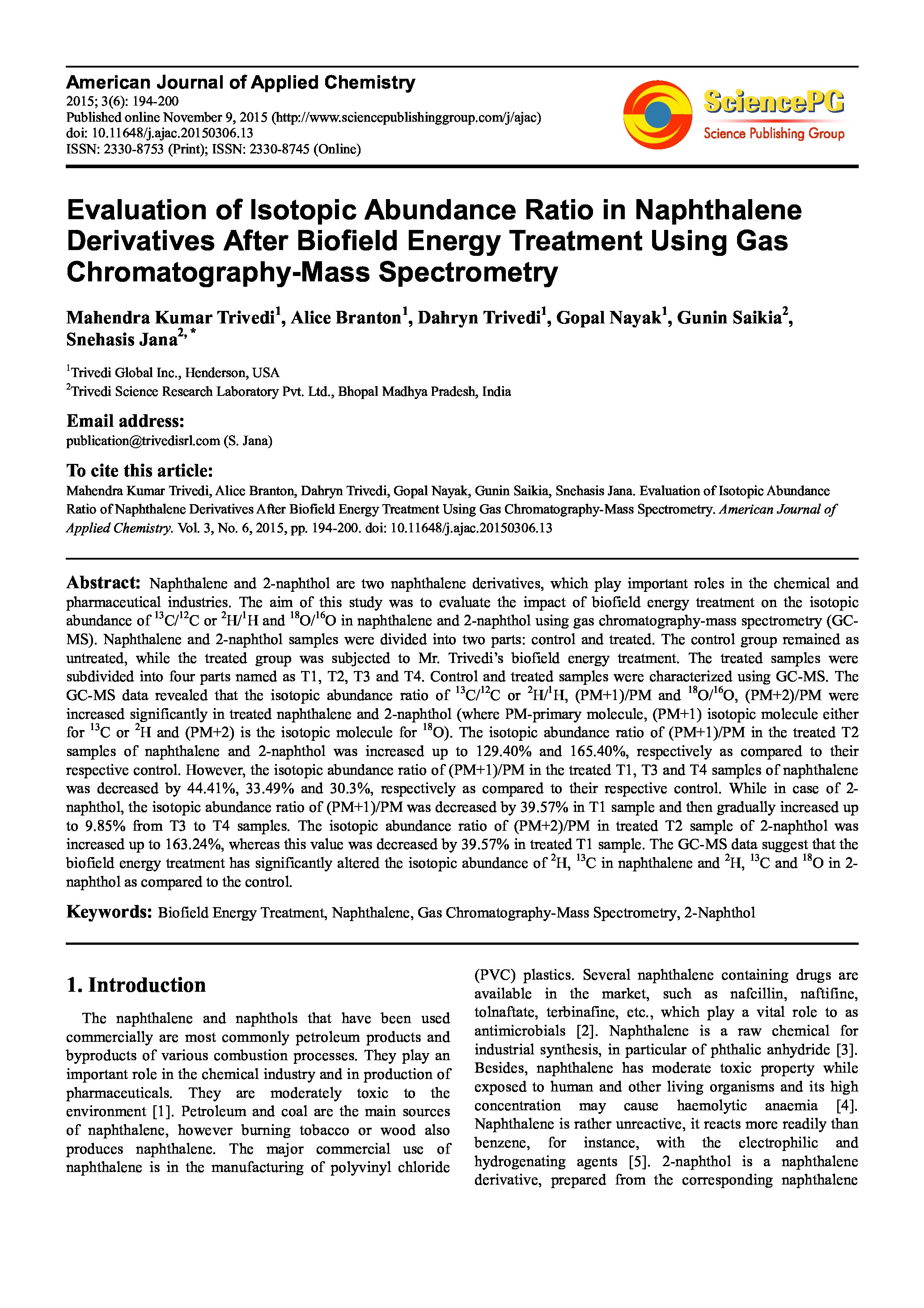Evaluation of Isotopic Abundance Ratio in Naphthalene Derivatives After Biofield Energy Treatment Using Gas Chromatography-Mass Spectrometry
Affiliation
Trivedi Global Inc., Trivedi Science Research Laboratory Pvt. Ltd.
Main category
Natural Sciences (Analytical Chemistry, Method Development (Chemistr)
Abstract
Naphthalene and 2-naphthol are two naphthalene derivatives, which play important roles in the chemical and pharmaceutical industries. The aim of this study was to evaluate the impact of biofield energy treatment on the isotopic abundance of 13C/12C or 2H/1H and 18O/16O in naphthalene and 2-naphthol using gas chromatography-mass spectrometry (GC-MS). Naphthalene and 2-naphthol samples were divided into two parts: control and treated. The control group remained as untreated, while the treated group was subjected to Mr. Trivedi’s biofield energy treatment. The treated samples were subdivided into four parts named as T1, T2, T3 and T4. Control and treated samples were characterized using GC-MS. The GC-MS data revealed that the isotopic abundance ratio of 13C/12C or 2H/1H, (PM+1)/PM and 18O/16O, (PM+2)/PM were increased significantly in treated naphthalene and 2-naphthol (where PM-primary molecule, (PM+1) isotopic molecule either for 13C or 2H and (PM+2) is the isotopic molecule for 18O). The isotopic abundance ratio of (PM+1)/PM in the treated T2 samples of naphthalene and 2-naphthol was increased up to 129.40% and 165.40%, respectively as compared to their respective control. However, the isotopic abundance ratio of (PM+1)/PM in the treated T1, T3 and T4 samples of naphthalene was decreased by 44.41%, 33.49% and 30.3%, respectively as compared to their respective control. While in case of 2-naphthol, the isotopic abundance ratio of (PM+1)/PM was decreased by 39.57% in T1 sample and then gradually increased up to 9.85% from T3 to T4 samples. The isotopic abundance ratio of (PM+2)/PM in treated T2 sample of 2-naphthol was increased up to 163.24%, whereas this value was decreased by 39.57% in treated T1 sample. The GC-MS data suggest that the biofield energy treatment has significantly altered the isotopic abundance of 2H, 13C in naphthalene and 2H, 13C and 18O in 2-naphthol as compared to the control.
DOI
10.18147/smn.2016/paper:234
Do you have problems viewing the pdf-file? Download paper
here
If the paper contains inappropriate content, please
report the paper. You will be redirected to the landing page.
